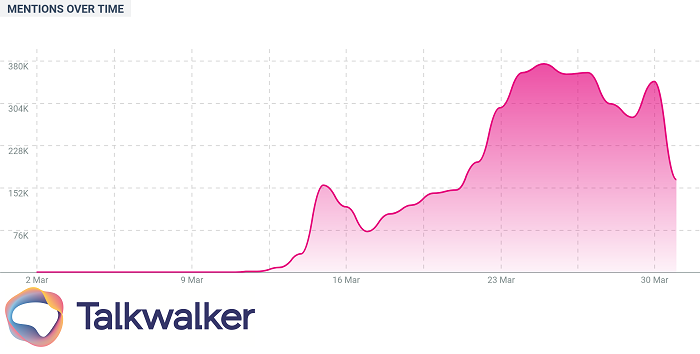Download free crisis management templates
#StayHome
One of the biggest impacts from the crisis is social isolation. With people having to change their lifestyle to meet new movement restrictions, shopping, working and even education have had to adapt.
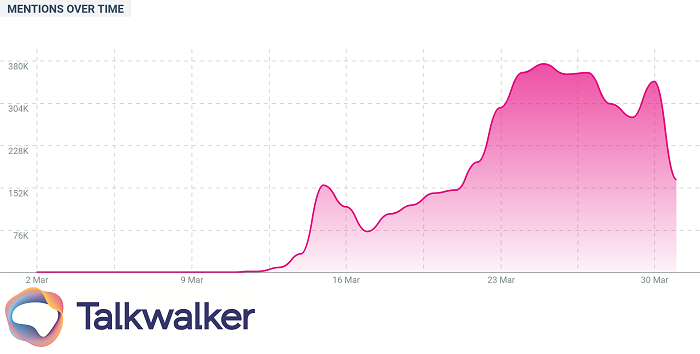
In barely a month, #StayHome has erupted from zero conversations, to a total 3.9M mentions. People are self isolating, and encouraging others to do the same.
But by staying at home, the consumer habits we’ve become accustomed to, have to change. Workplaces have moved into the home office. Kitchen tables have become classrooms. And for those who like the gym, we’re all looking for ways to stay fit while staying put.
These are consumer trends driven by corona.
Working from home
Whether following government advice, or using their own discretion, companies have had to close to protect both staff and customers. But were we ready?
With 330,000 mentions of workplace closures throughout March, the issue became a major talking point when it peaked on March 16. This was led by many major US retailers closing their branches across the country.
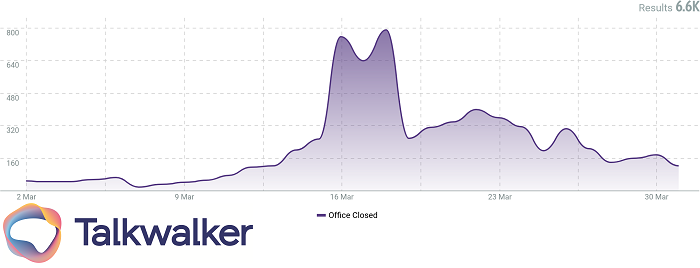
Mentions of workplace closures peaked on March 16, with many brands independently deciding to close stores to protect staff and consumers. Sample: 2%
From then on, people had to switch to working from home, where possible. And it seems people were ready. Just. Although the peak came after businesses started closing, there was a large uptick of working from home conversations, demonstrating an awareness that processes would have to adapt before they were needed. A little preparation goes a long way.
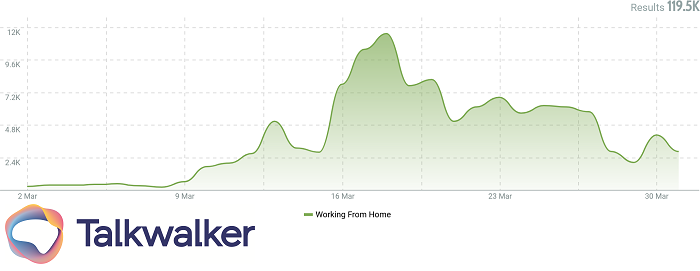
Mentions of working from home, started peaking from March 13, demonstrating some mild preparation for the closures ahead. Sample: 2%
When we consider the usual chatter regarding working from home is around 50,000 mentions per week globally, 2.84million mentions from the peak week of the crisis, demonstrates a significant change in consumer habits.
What conversations are driving the trend?
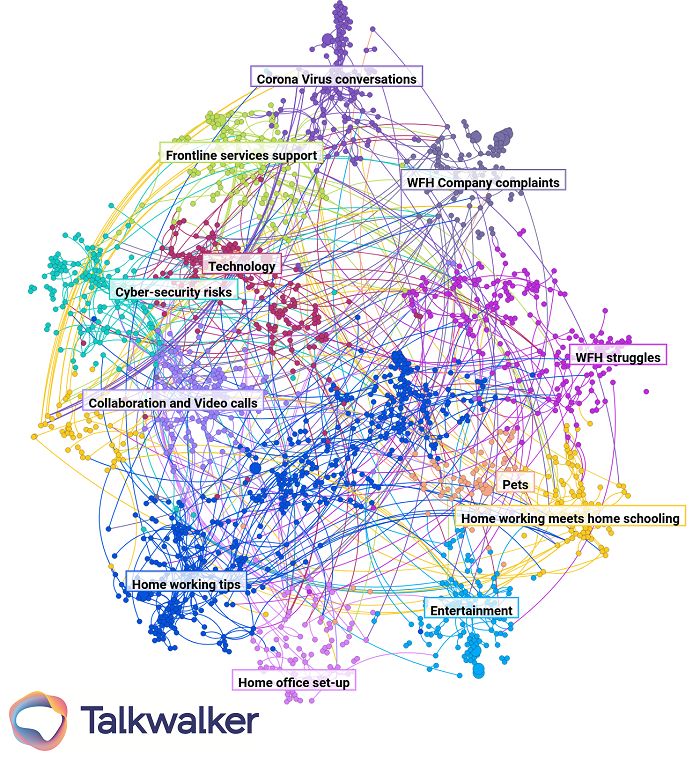
23.1% of working from home conversations are driven by technology and related matters. The displacement of significant parts of the workforce, has required a significant technological input.
Technology (23.1%)
Conversations around technology, fall into 3 main categories -
- The new tech needed to keep working.
- The tech needed to keep in touch.
- Cybersecurity.
Brands have had to invest heavily in updating their processes and workflows, to ensure collaboration can continue from afar. Cybersecurity is a major part of this, providing people with the tools they need, while protecting confidential company data.
Phishing Alert W.F.H
Cyber criminals are using the lack of face to face contact as an exploit to gain money and information. Using spoofed internal email accounts to undertake criminal activity, with the hope staff working from home won’t question undertakings given to them pic.twitter.com/hJ7QxOAxLT— Hants Cyber Protect (@HCCyberProtect) March 18, 2020
Brands should be tackling cybersecurity risks, to protect both the company and their customers.
Home working tips (22.9%)
With working from home only becoming big in the last 2 weeks of March, people are still adjusting. Unsurprisingly then, the conversation is being led by hints and tips about how to handle it.
Top Tips for working from home and staying sane! Read here: https://t.co/KtyQ8P5Vw4 #workingfromhome #mumpreneurs #business #hintsandtips #rt #girlboss #businesstips #homeoffice #worklife #SmallBusiness #homeschool #freelancelife pic.twitter.com/9DnPGi8RBG
— Sharon (@BacktoyouBeauty) March 29, 2020
Sharing great working from home tips, can help build community engagement, and provide consumers with much needed help in a difficult time.
Other major conversations
Working from home struggles (10.9%) - From the serious, to the silly, people are listing the issues they’re facing in this new environment.
Husband's company of 7000+ ordered EVERYONE to WFH for the entire month. Awesome. Cool. I get it.
But a week in, I think I like him at the office better I swear, if I hear one more phone call about firewalls...
— Tori Leigh (@tori___leigh) March 11, 2020
Confinement is certainly a real issue now.
Entertainment (6.7%)
After a long day at work (at home), people are craving more entertainment. Including more traditional and nostalgic crafts.
View this post on InstagramA post shared by jennifer davis (@smartstudioakron) on
Now is a great time to engage new followers with hands-on activities.
Pets (3.3%)
Of course, if you’re at home all day, then that means more time with your pets. And there’s nothing more exciting on the internet, than pictures of people’s cats or pupers.
WFH break!
We could all use a few more doggos in our feed this week. So please send us your most adorable good boys! pic.twitter.com/f3mTp9fiF9
— Red Sox (@RedSox) March 17, 2020
Dogs and cats drive excellent engagement even at the best of times. Right now, they’re just the pick-me up people need.
Working from home - brands
The leading tech brands that help people keep in touch are dominating all work from home conversations. Video conferencing tool, Zoom, is mentioned in 0.83% of all working from home conversations, showing a huge uptake of the tool over the last month.
Similar collaboration or efficiency tools such as Skype, Microsoft Office, Google Hangouts, also dominated the topic.
Get your daily marketing insights update
Homeschooling
Schools, colleges, and universities have had to follow in suit with workplaces. With a pattern in mentions very much like the above.
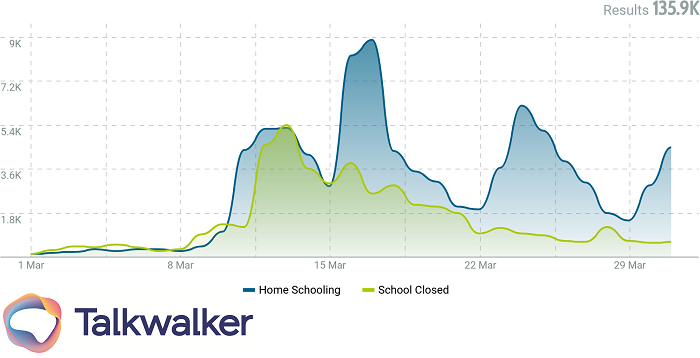
There was a brief peak in mentions of homeschooling before the prime school closure conversation on March 13. But the real realization of the task ahead didn’t hit until Tuesday March 17. Sample: 2%
The real story here though, is that while working from home peaked then stabilized within one week, homeschooling is driving peaks week after week. Totaling 4.49 million mentions throughout March.
People are struggling to adapt to teaching children at home, and creating more conversations each week seeking help and advice. Only the weekends bring some respite.
What conversations are driving the trend?
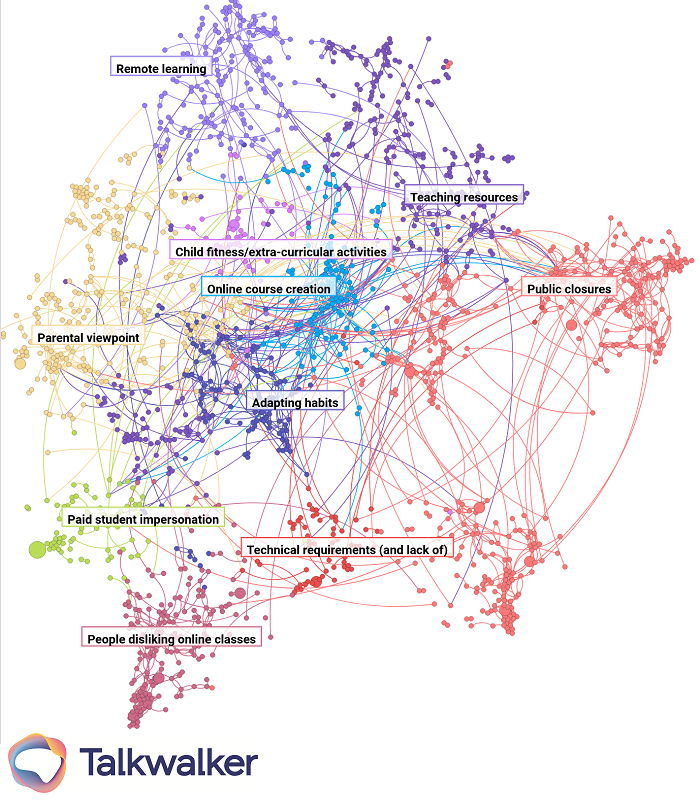
Unsurprisingly, public closures dominate the conversations related to homeschooling (21.8%). This wasn’t by choice, but the only option to take when faced with the ongoing situation.
Teaching resources (17.1%)
Again, the community was quick to respond to meet the new requirements of homeschooling. Whether teachers having to adapt to a remote teaching role, or parents learning to become home teachers (often while juggling working from home too), everyone is having to learn new skills.
With many businesses and professionals providing the resources and tools they need.
A great list of online learning resources from @Cisco, including #HourOfCode! https://t.co/4YAHqRiOcJ
— Code.org (@codeorg) March 21, 2020
Helping provide relevant resources ensures your brand remains a vital part of your consumer mindset.
Parental viewpoint (14.5%)
As parents adapt to their new role, they’re sharing their stories online. Whether positive or negative, successful or otherwise, people are having to share their experiences as part of the coping mechanism. Finding social interactions, and community support, even when face-to-face isn’t possible.
These conversations are demonstrating the needs that consumers require the most, and would be valuable to interact with if possible.
@RAPringleLait My 2 daughters (aged 11 and 7) have both just finished school, however, as I already work from home - I am just wondering how I am supposed to continue working from home - whilst 'home schooling' my children?
— Susie Miller (@sjemdesigns) March 22, 2020
Facing new challenges, users are turning more to social media to look for help and support. Brands should try to help in these conversations where possible.
Other major conversations
People disliking online classes (10.1%)
Some students are struggling to adapt to the changing environment, with many not liking the new online class structure. Expect this to drop as people get used to the change.
I hate online classes I want to go back to school pic.twitter.com/eANNJurSuL
— Blank Space (@Im_Feeling16) March 25, 2020
Some of the online class dislike is due to people missing the social interaction of school.
Paid student impersonation (4.9%)
There’s always someone that looks to profit from every situation. There’s been a rise of businesses offering to sit exams or classes, or write papers for students.
Pay me to do your assignments and online classes!
Grade A guaranteed#homework #assignment #discussion #online class#research paper #pay someone write #Pay essay due#pay history #psychology #math #assignment #thesis
Send us the prompt
DM us now— quality writers (@quality76957071) March 17, 2020
Educational facilities should be aware of the increased risk of this kind during this time.
Technical requirements (and lack of) (3.8%)
To make homeschooling work, students require more technical support, with items such as tablets, computers and internet. This change has highlighted a gap in technical support in some areas.
Some of our pupils don’t have laptops or tablets at home. They can’t access remote learning. Can you donate laptops, tablets or computers to our 3 Hackney schools? 400 pupils need your help. Please DM us or email donations@kingsmead.hackney.sch.uk retweet #CoronavirusLockdownUK pic.twitter.com/hZdMBzd1m2
— Mandeville School (@MandevillePS) March 25, 2020
As a business, if you can help support this issue in any way, do.
Homeschooling - brands
The brands relating to homeschooling are similar to working from home, dominated by tech suppliers, offering the facilities classrooms need to keep in touch.
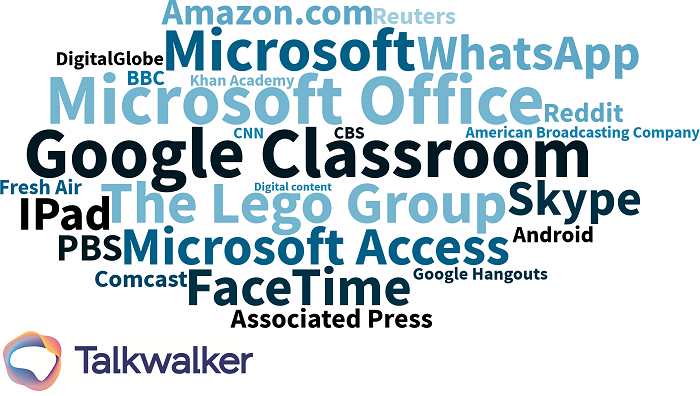
One brand that stands out from this, is Lego. That’s due to many turning to the construction toy as a form of educational play. With the company supporting through their own initiatives.
We may be staying indoors, but there is one thing our awesome colleagues are doing to help us and our families (and pets!) through it… BUILDING!
Join us and share your creations with #LetsBuildTogether pic.twitter.com/QJabI2lLYW
— LEGO (@LEGO_Group) March 31, 2020
Encourage users to connect and engage, by promoting active play.
Mentions of Lego’s #LetsBuildTogether increased 1500% in the last week of March.
Home fitness
One consistent message globally, is that even during lockdown, people are still encouraged to take daily exercise. More so than they ever have been before. With 66K mentions in March, compared to the 97.6K mentions from the previous 12 months.
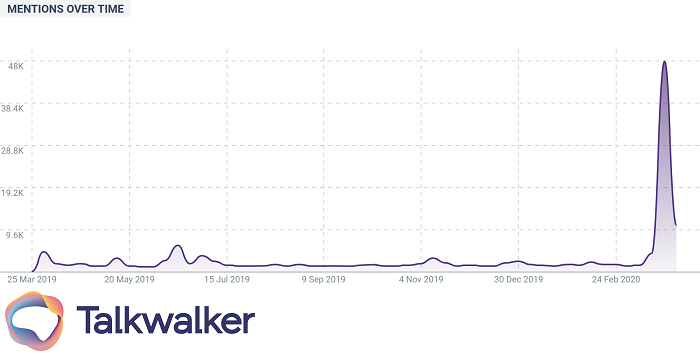
Daily exercise is a huge priority during the lockdown. Even though it didn’t matter much before.
The spikes of gym closures and home fitness peaked a little later, as most closures happened after workplaces and schools. The interesting element here is the second spike which came on Saturday March 21, showing a delayed realization of the impact from people who only use gyms at the weekend.
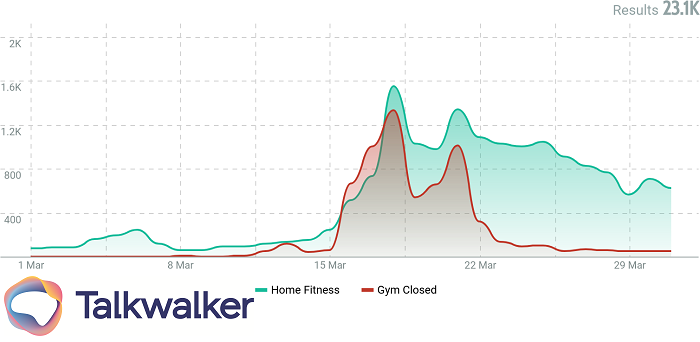
A second spike of conversations discussing gym closures and home fitness, demonstrates that a significant number of people were only impacted once they hit the weekend - demonstrating that much of the fitness market are weekend only users. Sample: 2%
What conversations are driving the trend?
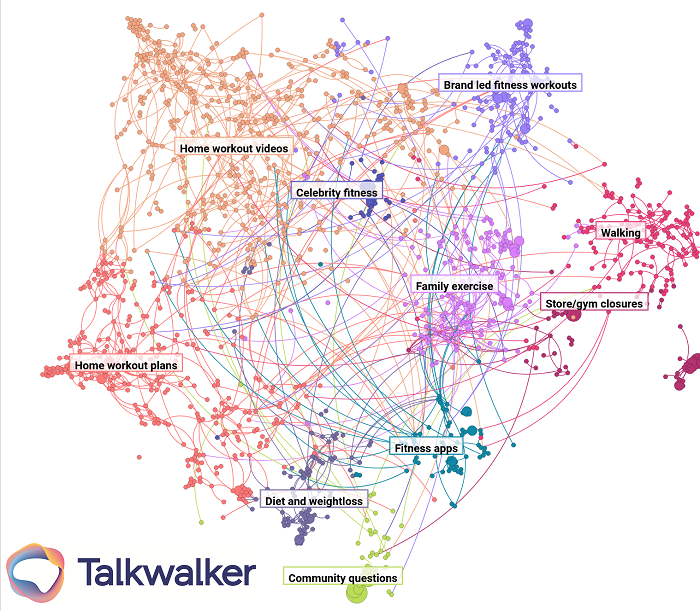
Home fitness is currently dominated by user generated content. Everyday social media users providing classes and plans for all.
Home workout videos (31.3%) and home workout plans (19%)
A vacuum quickly formed, with people looking for easy, understandable ways to stay fit while stuck inside. Everyone from personal coaches, to sports personalities, to influencers, have been sharing routines that people can follow along with.
View this post on InstagramA post shared by @marli - Marlena Rybacha (@mrybacha) on
Instagram makes sharing quick and easy routines, quick and easy. And at this time, information overrides the need for polished content.
And the most common form of exercise at this time? Walking is the simplest and easiest form of fitness.
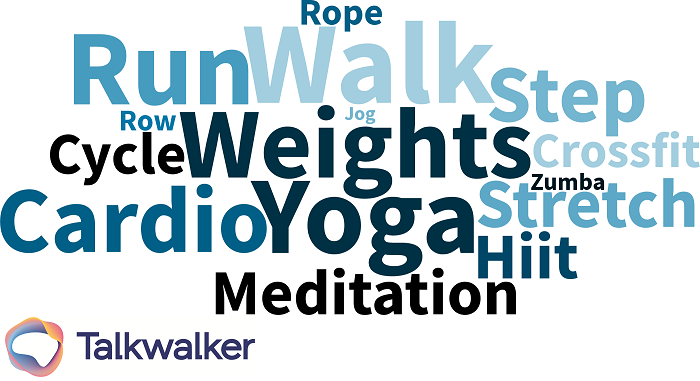
Walking, yoga, running and weight training are the most popular home fitness methods people are discussing right now.
Family exercise (10.8%)
There’s still a sense of family unity, even when it comes to exercise. People are finding ways to keep fit, while entertaining their children. And of course, encouraging healthier lifestyles for the younger generation too.
View this post on InstagramA post shared by ALESHA DIXON (@aleshaofficial) on
Look to engage all age groups in your home fitness program, to broaden your target audience.
Other major conversations
Brand led fitness workouts (9.1%)
With gyms closed, many are now engaging their audience at home, by providing their own home exercise and workout classes.
Planet Fitness to offer free at-home workout classes via live stream - USA TODAY https://t.co/zMbpCw6JvQ via @GoogleNews
— Robin (@Mi3Jules_xo) March 17, 2020
Live streaming is also another great way to engage audiences instantly.
Diet and weight loss (5.2%)
Losing weight is still quite high up in people’s minds, as they try to counteract the impact of less active lives. A healthy diet is also key to improving your immunity levels.
Quick guide on how to improve your immunity:
1. Get daily exercise and sunlight
2. Get a good night’s sleep
3. Eat clean, whole foods, diverse in color
4. Limit your sugar consumption and avoid vegetable oils
5. Keep your stress levels down— Kris Gethin (@kagedmuscle) March 15, 2020
Exercise and a healthy diet go hand in hand. Both topics worth being part of right now.
Celebrity fitness (2.5%)
And for every trend, there are always the celebrities that want to be part of it. These people could be identified for future influencer marketing campaigns, if suitable.
Heavyweight champ Tyson Fury's stay-at-home workout interrupted by his son... https://t.co/1YoYN8VgDw
— talkSPORT (@talkSPORT) March 25, 2020
Celebrities still generate conversations even now. They may be a way to engage your audience in the future.
Home fitness - brands
Numerous sport brands are included in the conversations, as people reference them in relation to sports equipment.
Technology brands are also popular, as people turn to apps and digital programs to support their fitness regimes. Spotify is of particular note, as people turn to the music app for fitness playlists.
Ongoing consumer trends?
The question is, will these trends continue post-crisis? People are creatures of habit, and these times could be changing the habits we used to know and love. Even once we’re less isolated, COVID-19 may have opened our eyes to other home-based consumer trends. Home working, home exercise and homeschooling could be here to stay.


